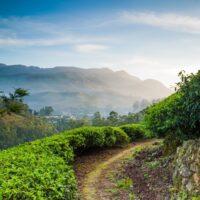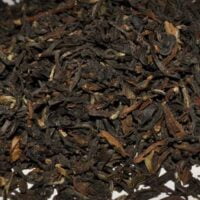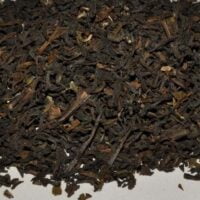Your basket is currently empty!
Darjeeling teas
Loose Leaf Darjeeling teas: the ‘Champagne of teas’.
Darjeeling tea, from India’s Himalayan foothills, is known as the ‘champagne of teas’ well-known for their characteristic muscatel flavours. There is often a great colonial history to such famous Darjeeling gardens as Margaret’s Hope and Castleton.
Loose Darjeeling tea is a light afternoon tea, best drunk without milk. First and second flush teas are noted for their briskness and smoothness respectively. The former are fresh, light and have a distinct muscatel character and the latter are particularly noted for their fuller, fruitier and smoother character.
Black Darjeeling teas are famous worldwide for their muscatel character and floral nose. Darjeeling lies at around 6000 ft. in the southern foothills of the Himalayas. The climate is cool and misty, bringing between nine and thirteen inches of rain during the monsoon season of June to September. Cool northerly winds from the high Himalayas ensure temperatures are cooler for a given altitude than might be expected.
However teas produced at higher elevations have a fresher, more floral and pronounced muscatel character. Darjeeling was cultivated originally by British planters in the nineteenth century using cuttings from Chinese plants but the Assam variety, indigenous to India, is used at lower altitudes. First Flush Black Darjeeling teas are picked in March to mid-April. Second Flush Black Darjeeling Teas are picked in May. See also our Green Darjeeling Teas and Darjeeling Oolong.
DARJEELING TEA INSIGHT: From: Himalayan foothills of West Bengal, India. Known as: the ‘Champagne of teas’. Type of tea: Black orthodox. Sometimes green, oolong or white. Leaf: neatly hand-picked two leaves and a bud. Classified by: grade and picking. First grown: 1859 using Chinese tea seed. Picking: 1st Flush from March. 2nd Flush from May. Character: Light bodied, muscatel, fruity. In the cup: brisk to smooth.
-

Darjeeling first flush teas (5)
-

Darjeeling second flush teas (6)
-

Darjeeling Margaret’s Hope FTGFOP
£8.38 – £18.92 -

Darjeeling Castleton FTGFOP
£8.38 – £18.92 -

Darjeeling Singell FTGFOP Organic
£10.22 – £22.42
If you would like a copy of our FREE guide to tea, click here





